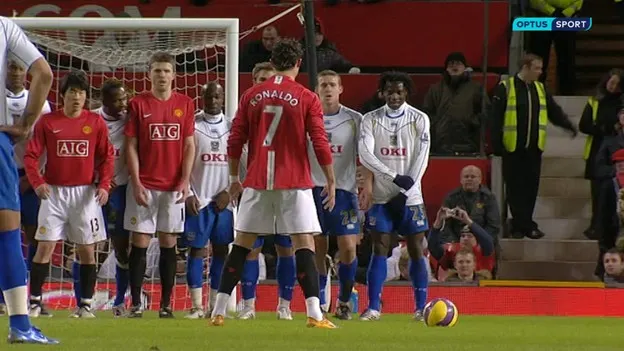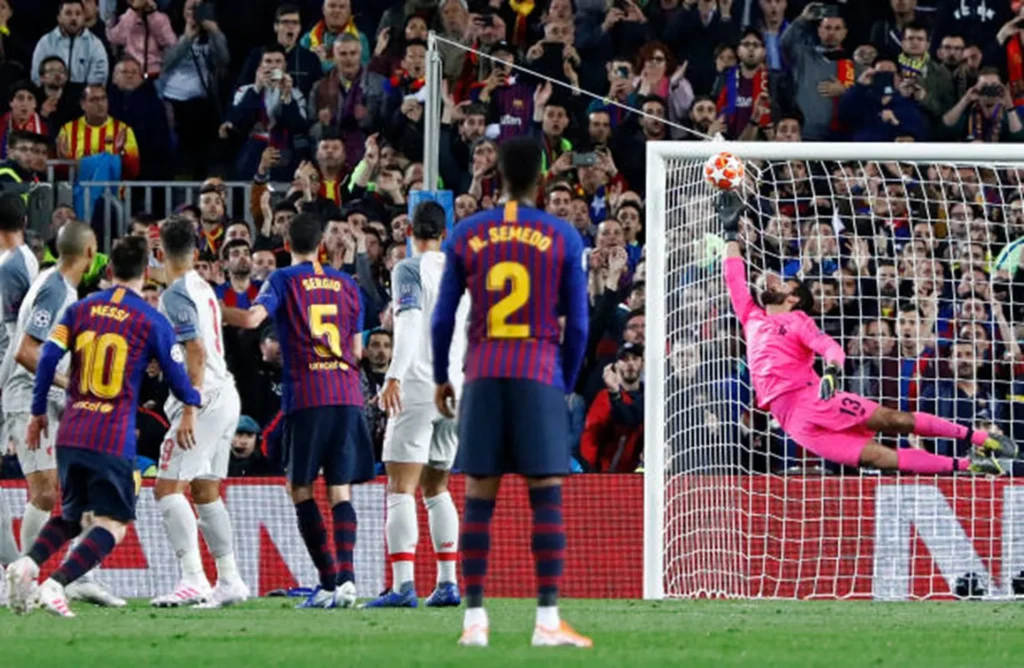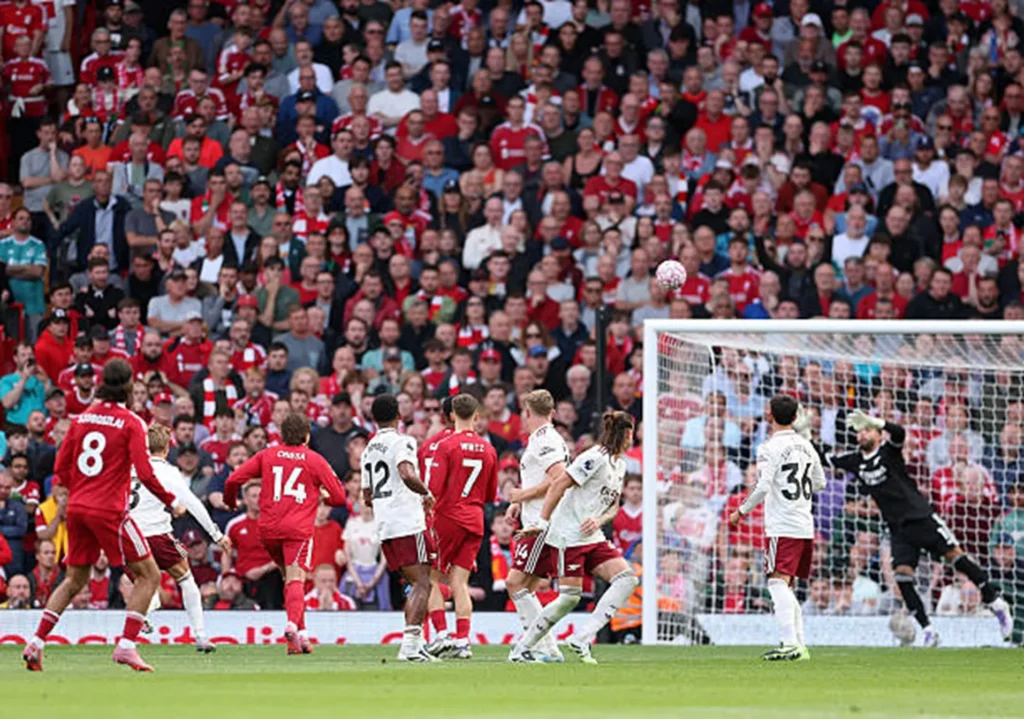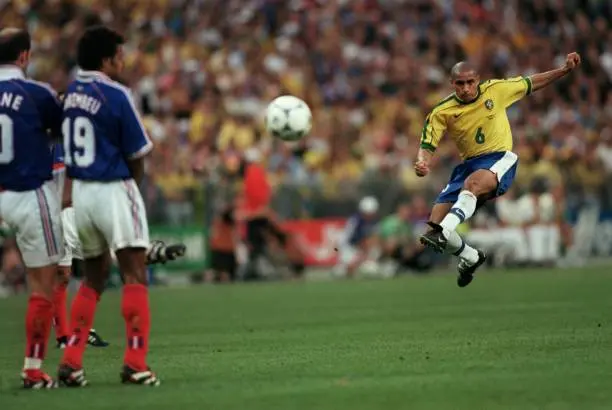Football is not just a sport; it’s an art. One of its finest arts is the free kick.
Imagine a team earning a free kick with the score level. Fans wait in anticipation, praying for a goal. The goalkeeper positions himself as the opponent sets a defensive wall with four or five men, with a defender lying behind it to block ground shots. The player strikes, the goalkeeper stretches, and bam! The ball lands perfectly in the top corner. The team takes the lead.
That’s the beauty of free kicks. In just five seconds, fans move from tension to jubilation.
Over the years, we’ve witnessed stunning free kicks.
Cristiano Ronaldo’s thunderbolt against Portsmouth in 2008

Messi’s 40-yard gem vs. Liverpool in the 2019 UCL semifinals

Dominik Szoboszlai’s long-range strike against Arsenal gave Liverpool the win.

Are left-footed players better free-kick takers?

As I have talked about statistics, for both left-footed and right-footed players in my video, only 20% of professional players are left-footed. This rarity gives them a tactical and visual advantage. Since 80% of players are right-footed, goalkeepers mostly train against them, so their instincts work better when facing right-footed shooters.
Left-footed players’ unique body dynamics and goalkeepers’ limited exposure make their shots harder to stop.
What does Statistics tell us about left-footed and right-footed players?
Lionel Messi, a left-footed player, is the 3rd highest free-kick taker of all time with 69. His conversion rate is 9%.
Cristiano Ronaldo, a right-footed player, has scored 64 free kicks. His conversion rate is 8%.

James Ward Prouse has the highest conversion rate of 12%. He has been breaking records in the Premier League lately.

As I discussed in my video, there are more right-footed players in the top 10 most free-kick goal scorers of all time. But why is that? The simple reason is that there are more right-footed players.
But statistically, the conversion rate of left-footed players is more. There are only 20-22% left-footed players. If we consider the top 50 free-kick takers from 2000-2024, there are 36 right-footed players while only 14 are left-footed. But if we talk about the top 20 free-kick takers of all time in terms of conversion rate, the conversion rate of left-footed players is 8.4% and that of right-footed players is 7.1%.
So there are more right-footed free-kick takers, but their conversion rate is less than the left-footed players. What is the reason behind this? To understand this, let me explain to you the science behind this.
What’s the Science behind Free Kicks?
Let’s talk about the dynamism of free kicks. Free kicks vary, including finesse, knuckleball, and chip. But all rely on one principle: the Magnus Effect. As I have explained this concept in my video, Magnus Effect is the phenomenon where a spinning object moving through the fluid (like air or water) follows a curved path.

For example, consider a right-footed player who tries to take a finesse free kick. He will make contact with the right-hand side of the ball. He tries to curve the ball. Now at the same instance, if we view the ball from the top angle, the ball will spin in counter counterclockwise direction. Now, according to the Magnus effect, since the ball is spinning into the fluid (which is air in this case), the speed of the rotation of the fluid on the left and right-hand side of the football will be different. This causes the pressure drop on the rear end of the ball. This means the pressure drop is more significant on the left side for the right-footed player. So the ball will follow the same trajectory.

The same principle goes for the left-footed player as well, but the direction will be reversed. He makes contact on the left-hand side of the ball. From the top angle, the ball will spin in a clockwise direction. And using the same explanation, the pressure drop will be more on the right-hand side, and the ball will follow the same trajectory.
Footballers use the Magnus Effect while performing finesse free kicks, knuckle free kicks, chip over free kicks, etc.
I have discussed the science behind free kicks in more detail in my YouTube video
Why do left footers have a higher success rate?
You might think the Magnus Effect works the same for both feet. So why do left-footers have a higher conversion rate and score more? The answer is body orientation.

As I have explained in my video, Left-footed players open their hips at wider angles, allowing sharper spin, about 8 to 12% more than right-footers. For example, Messi averages 1800 Rotations Per Minute on his free kicks, while Ward-Prowse averages 1600 Rotations Per Minute. This extra spin makes shots harder to predict.

One important thing to observe is that more knuckleball free kicks are hit by the right-footed players. So the technical variation in free kick for them is more. He can chip, knuckle, and finesse the ball around as well. But a left-footed player generally will go for the finesse free kick. We have rarely seen a left-footed player doing a knuckleball free kick.
But a left-footed player has more angular momentum and spins per minute, and hence it becomes difficult to save.
Conclusion
In conclusion, we can’t say that the left-footed players are better free-kick takers. But they can actually bend the ball better. But guys, here we are not comparing the footballers. We are only studying the science of left-footed and right-footed players.
Legends like Ronaldo, Ronaldinho, and Juliano (right-footed) or Messi, Dybala, and Griezmann (left-footed) have all mastered this art.


Modern football has evolved with defensive walls, including players lying behind them, and goalkeepers staying central. Scoring from free kicks is now harder, which is why each successful one feels magical. That is why we all get astonished and stand up on our feet to applaud these wonderful goals.

So yes, it’s not a myth that left-footed players enjoy a higher success rate. You can test this yourself by challenging a left-footed friend to a 50-shot free-kick contest and compare results. Then share your outcome in my YouTube video comments!.


